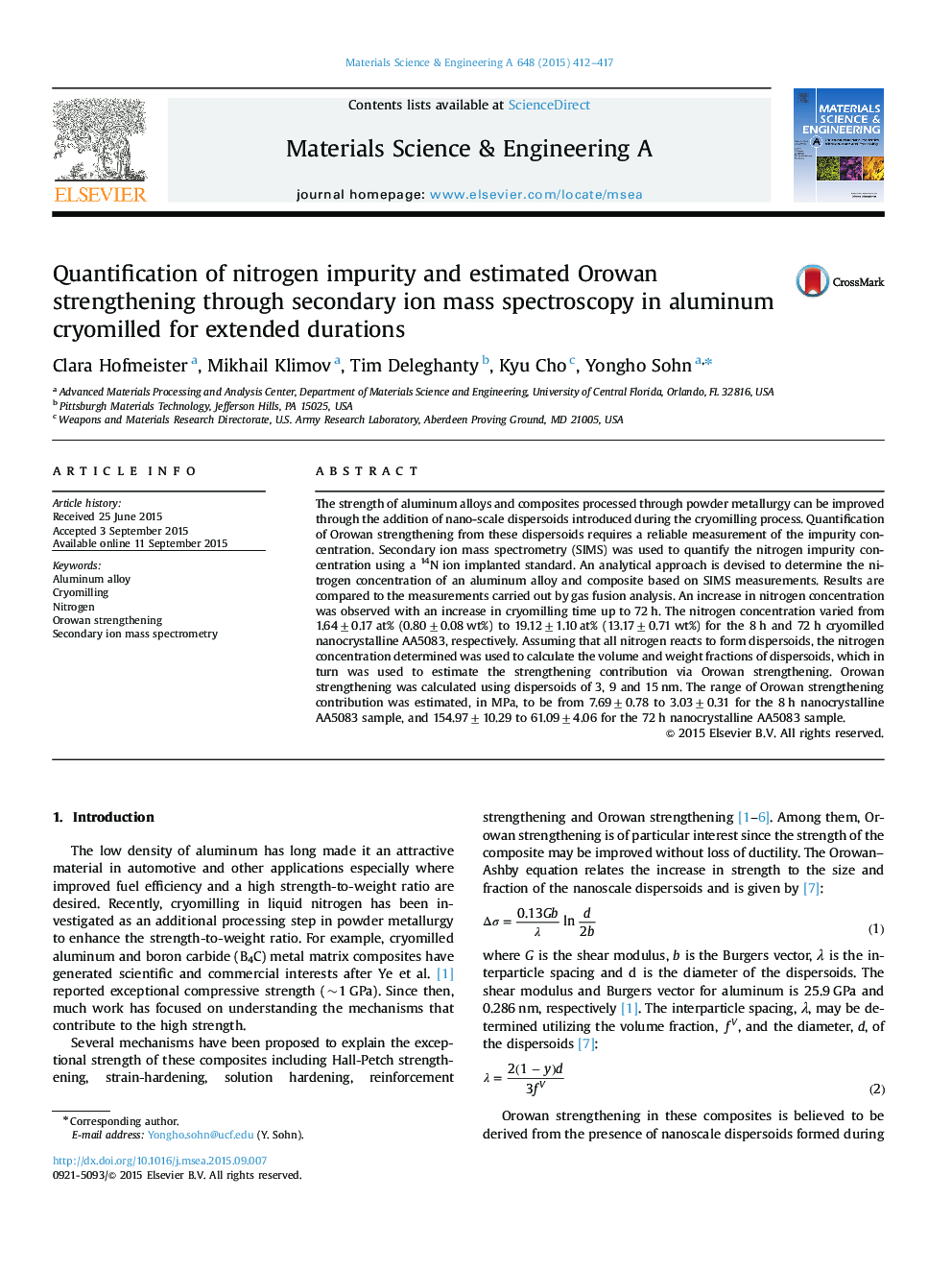| Article ID | Journal | Published Year | Pages | File Type |
|---|---|---|---|---|
| 1573934 | Materials Science and Engineering: A | 2015 | 6 Pages |
The strength of aluminum alloys and composites processed through powder metallurgy can be improved through the addition of nano-scale dispersoids introduced during the cryomilling process. Quantification of Orowan strengthening from these dispersoids requires a reliable measurement of the impurity concentration. Secondary ion mass spectrometry (SIMS) was used to quantify the nitrogen impurity concentration using a 14N ion implanted standard. An analytical approach is devised to determine the nitrogen concentration of an aluminum alloy and composite based on SIMS measurements. Results are compared to the measurements carried out by gas fusion analysis. An increase in nitrogen concentration was observed with an increase in cryomilling time up to 72 h. The nitrogen concentration varied from 1.64±0.17 at% (0.80±0.08 wt%) to 19.12±1.10 at% (13.17±0.71 wt%) for the 8 h and 72 h cryomilled nanocrystalline AA5083, respectively. Assuming that all nitrogen reacts to form dispersoids, the nitrogen concentration determined was used to calculate the volume and weight fractions of dispersoids, which in turn was used to estimate the strengthening contribution via Orowan strengthening. Orowan strengthening was calculated using dispersoids of 3, 9 and 15 nm. The range of Orowan strengthening contribution was estimated, in MPa, to be from 7.69±0.78 to 3.03±0.31 for the 8 h nanocrystalline AA5083 sample, and 154.97±10.29 to 61.09±4.06 for the 72 h nanocrystalline AA5083 sample.
